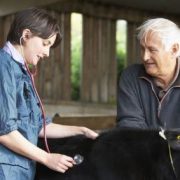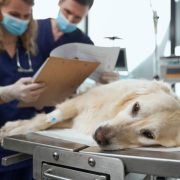Antimicrobial drug use in food-producing animals and associated human health risks: what, and how strong, is the evidence?
Antimicrobial drug use in food-producing animals and associated human health risks: what, and how strong, is the evidence?

Open Access
In our edition of: Oct 2017
In our categories of: farm animals
our summary:
Hoelzer, K. et al. (2017) Antimicrobial drug use in food-producing animals and associated human health risks: what, and how strong, is the evidence? BMC Veterinary Research, 13:211
Antimicrobial resistance (AMR) presents a global public health threat which leads to millions of resistant infections and thousands of deaths each year. Although it is widely accepted that the widespread use of antimicrobial drugs is the most important factor leading to resistance, some groups question the link between agricultural antibiotic use and resistant infections in humans.
This comprehensive review outlines the global legislative responses to antimicrobial use in animal agriculture including the ban on the use of any antimicrobial drug for growth promotion, including antimicrobial drug classes not used in human medicine, which has been in place in Europe since 2006.
The review then goes on to summarise and evaluate the available evidence for, or against, a relationship between antimicrobial drug use on farms and antimicrobial-resistant human infections using the ‘Grades of Recommendations Assessment, Development and Evaluation’ GRADE framework to evaluate the strength of the evidence.
The review was able to show there is substantial evidence to support the following conclusions:
- Use of antimicrobial drugs on farms can lead to an increase in AMR among foodborne pathogens
- There is a risk of resistance emergence in commensal bacteria after exposure to antimicrobial drugs
- Use of antimicrobial drugs can lead to the emergence of resistance in exposed bacteria, and longer exposure periods coupled with previous antimicrobial drug exposure is associated with an increased risk of resistance
- There is a strong link between foodborne or zoonotic bacteria with antimicrobial resistance genes on farms and human health risks
- Antimicrobial resistant commensal bacteria that emerged in food-producing animals can be transferred to humans
- Resistant animal-associated commensals can colonise humans in contact with the animals, and that the same resistance genes are present in bacteria from animals and humans
- Infections with antimicrobial resistant bacteria tend to be associated with worse public health outcomes (higher morbidity and mortality) than infections with susceptible strains
There is clear evidence linking antimicrobial use on farms to the public health threat caused by antimicrobial resistance in human medicine. Therefore, there is a need to curtail the use of antimicrobials in food-producing animals to occasions where it is necessary to protect animal health and well-being.
Image copyright attribute:
acceptphoto / 123RF Stock Photo






Leave a Reply
Want to join the discussion?Feel free to contribute!